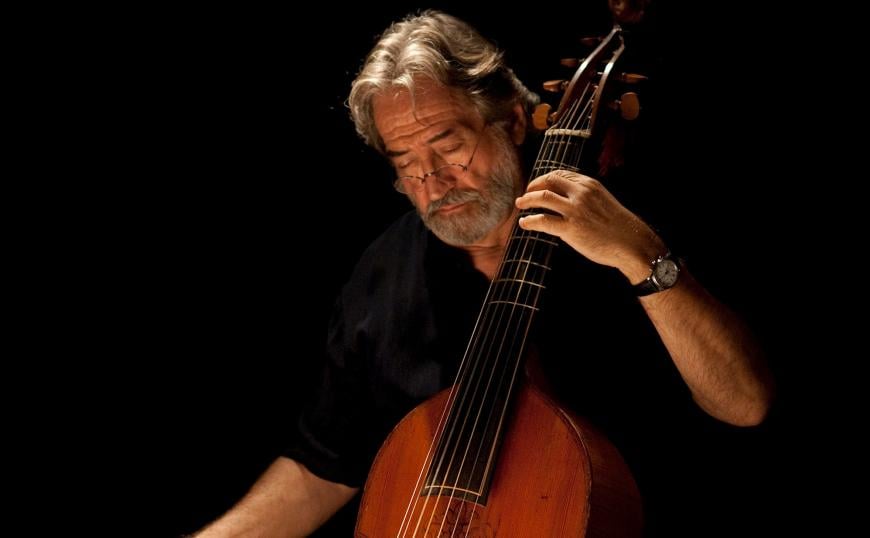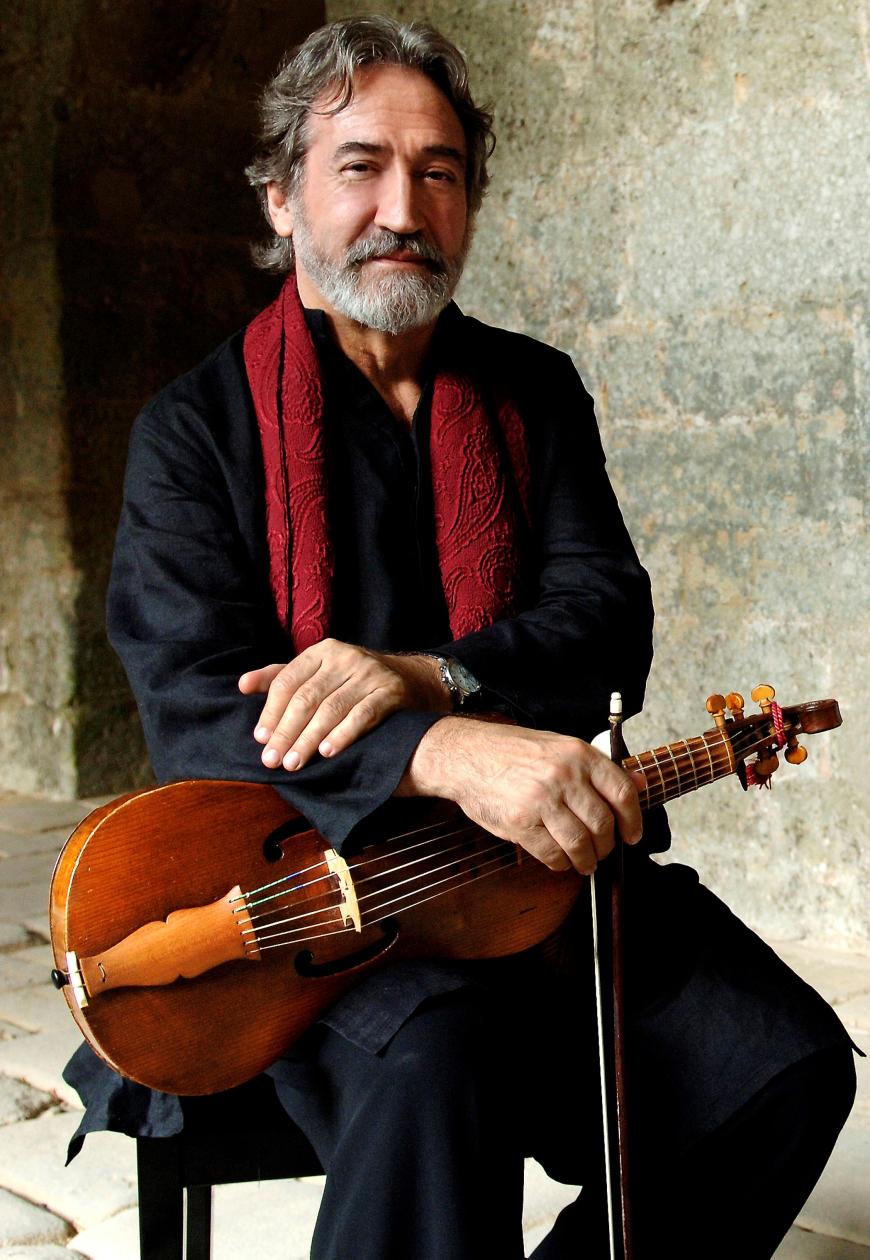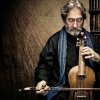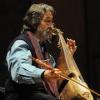
During the still-lingering pandemic, I’ve gotten used to listening to concerts in half-empty halls , but that was far from the case when viola da gamba virtuoso Jordi Savall and friends played Cal Performances last Thursday. Berkeley’s First Congregational Church was filled to the rafters for the final concert of Hespèrion Hesperion XXI’s North American tour.
The Barcelona-based ensemble is known for exploring the crossroads of Mediterranean cultures in the Middle Ages and Renaissance (one program was “The Routes of Slavery,” presented at Cal Performances in 2018). But this program was European music for viol consort, with Savall and four others on various sizes of viola da gamba, accompanied by a lutenist. The program was originally announced as featuring Le Concert des Nations, a classical orchestra directed by Savall.
Consort music for viols was popular among aristocratic and merchant circles in Europe for about two centuries from the 1500s. For the most part, the viol was the instrument of choice for the semi-private enjoyment of (often) amateur players rather than for the entertainment of a large audience. The instruments are quiet, and the music is often inner-looking. By the late Baroque period, the viol consort had largely been superseded by the louder and more extroverted violin family, and its music had been shelved in favor of newer styles better geared for listening in larger venues.

Savall came to fame in 1991 when he ghosted Gérard Depardieu in the first (and perhaps only) feature film about viols, Tous les Matins du Monde. Since then, he has championed the music of the viol in a career of indefatigable concertizing and recording with ensembles of high quality.
The musicians on this program were no exception, playing with soloistic verve and gripping (if not always perfectly tight) collaboration. With at least one last-minute personnel change, the blend of instruments seemed less balanced than it might have been. The lute accompanying many of the consorts was a welcome addition but needed to be stronger to be really effective.
In viol consorts, all the instruments get to play interesting parts (this is not always true in Baroque music, where the violins tend to rule), so one of the joys of these pieces is the interplay of inner voices, which flow about each other with startling rhythms and shifts of melody. Many of Hespèrion’s selections were in the free-form genre of the fantasia, in which composers often supplied some structure by using a popular tune that pops up recurrently, like a computer programmer’s “Easter egg.”
Hespèrion XXI’s program led off with a French fantasia incorporating the popular tune “Une jeune fillete” (A young girl — who, like Manon Lescaut in a much later opera, was pressured into a convent to prevent her marrying the wrong man). Later we had a catchy variation on “Browning” (“The Leaves Be Green”) and a stunning canzona by the German Baroque composer Samuel Scheidt based on the English song “O Neighbor Roland.” Henry Purcell, writing at the very end of the viol consort’s ascendancy, was represented by his “Fantasia Upon One Note,” in which one player stays obsessively on a single note throughout the piece while the others explore all possible harmonies around that one pitch. After Purcell, perhaps the only place to turn was Bach’s Art of the Fugue — difficult to play, knotty in its counterpoint, and decidedly absent of popular tunes.
The heyday of the viol consort was not a peaceful time in Europe — religious and civil wars raged across the continent — so it is not surprising to find battle pieces among the repertoire. Like listening to the 1812 Overture on a fine July evening, players must have enjoyed reenacting distant dangers in a safe and comfortable room, imitating trumpet calls, drums, marches, and retreats on their relatively peaceable instruments.
Dance forms abound in the viol literature (as they do in the later Baroque repertoire), here represented by a favorite consort combination, a pavane — slow and stately — followed by a lively galliard. Composers like William Lawes and Anthony Holborne made these dances so musically intricate that they could never have served as “mere dance music,” the pavanes tending toward melancholy (one is punningly titled “Semper Dowland semper dolens” — always Dowland, always sad) and the galliards taking their cheeriness close to frenetic. The contrasting moods and virtuosic interplay make for great listening.
Hespèrion XXI generously played two fine encores, one featuring Savall in a virtuoso mode with fingers flying and the other a lively dance by William Brade, a show-off piece for the entire ensemble, with split-second changes between bowing and plucking. The standing ovations were energetic and protracted, veering close to pop-idol appreciation, though no lighted cell phones were raised.



